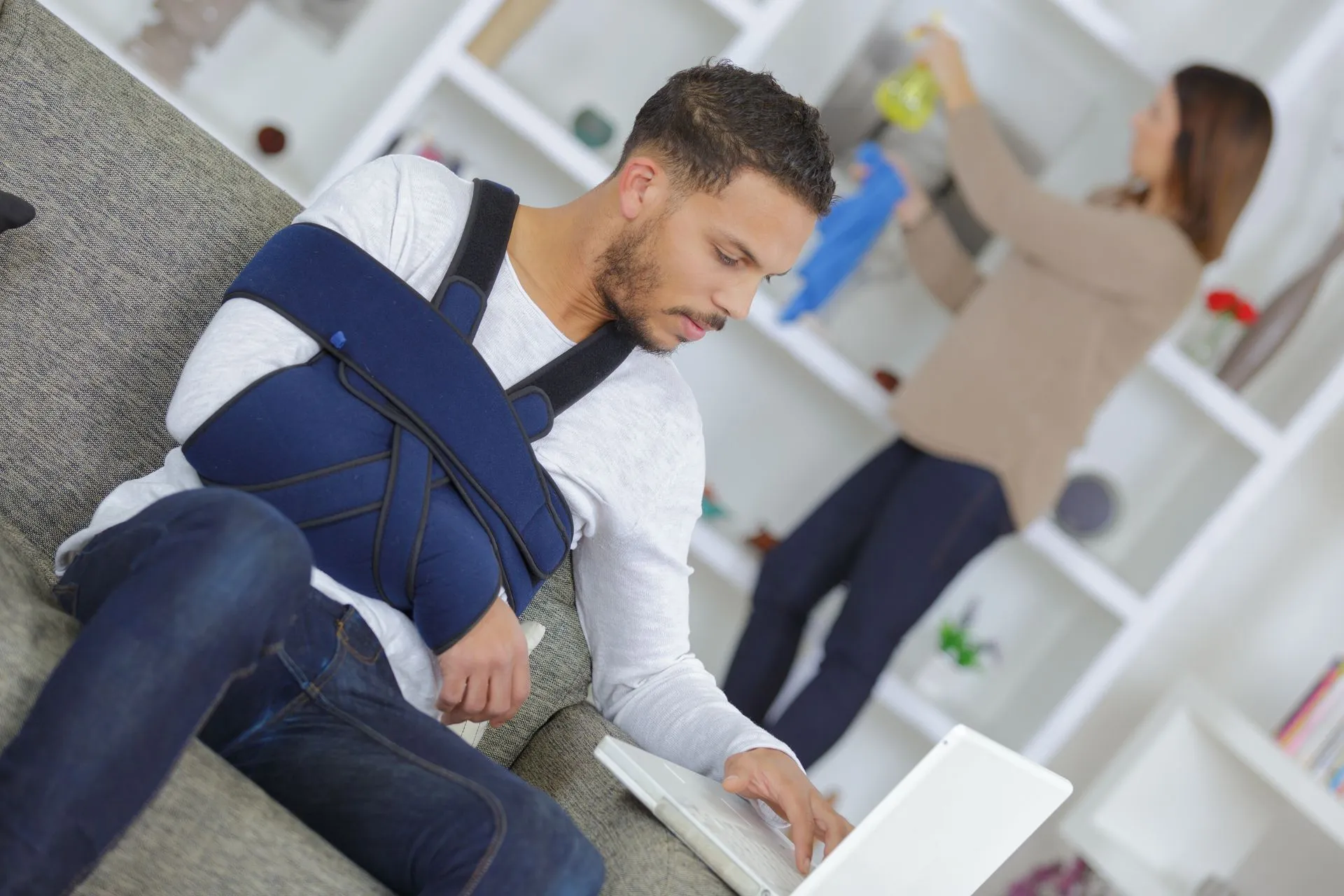
In many workplace injury scenarios, injured workers must rely solely on their workers’ comp benefits for medical and wage compensation. They typically won’t receive full wage compensation and aren’t entitled to any non-economic damages through a traditional workers’ comp claim.
However, there are some situations in which a third party (someone other than your employer) is fully or partially responsible for your accident and the injuries you suffered. In those cases, injured workers can potentially increase their compensation by filing a third-party claim against the party that contributed to the injury.
Potential Third Parties in Workplace Injury Cases
Product Manufacturers
The manufacturer or distributor of a piece of equipment, safety gear or another product that caused or contributed to your accident, whether due to a design defect, manufacturing flaw or inadequate warnings, can be held liable. Common examples include malfunctioning machinery, faulty safety gear or tools that break or fail during use.
Subcontractors and Independent Contractors
Subcontractors or independent contractors can be held responsible if the injury occurred on a construction site comprising multiple contractors.
A common scenario involves another subcontractor or construction company failing to meet industry standards, creating an unsafe working environment. This can result in injuries caused by falling debris, scaffolding accidents or heavy machinery accidents.
Property Owners
Property owners can be held liable if someone was injured on their property while they were fulfilling their job duties, such as if a custodian or delivery carrier fell and sustained a serious injury due to wet floors, uneven surfaces or poor lighting.
Vehicle Drivers
Other drivers on the road can be held responsible if their negligence causes a car accident that injures an employee fulfilling their work duties, such as a delivery driver, salesperson or a construction worker transporting equipment.
Maintenance and Repair Companies
Maintenance and repair companies can be held liable if their failure to maintain equipment or premises results in an employee of another company being injured while on the job.
For example, if a flooring contractor improperly installed carpeting in an office, leading to a trip and fall of a worker in that office, or an elevator repair contractor failed to properly repair an elevator, which then injures someone who was working in the building.
Pros of Pursuing a Third-Party Liability Claim and a Workers’ Compensation Claim
By pursuing both a workers’ compensation claim and a third-party liability claim[1] if you’re eligible, you can potentially maximize your compensation and benefits. Third-party liability claims also have certain advantages that aren’t included in even the most generous workers’ compensation settlements.
For example, third-party claims allow you to seek compensation for non-economic damages like pain and suffering, emotional distress and loss of quality of life.
Unlike workers’ compensation, which often limits your choice of medical providers, pursuing a third-party claim gives you the freedom to select your own healthcare professional, granting you more control over your medical care.
A third-party claim can also allow you to receive full lost wages compensation instead of the roughly two-thirds wage replacement of workers’ comp.
While workers’ compensation has caps on certain benefits, third-party liability claims have no such limitations. This means that if the injury is catastrophic, involving scarring, paralysis or loss of limbs, a third-party claim can increase your chances of securing fair long-term recovery, so you don’t have to pay out of pocket for ongoing care.
Challenges Associated With Third-Party Liability Claims
Unlike workers’ compensation, a third-party liability claim requires that you prove negligence. Moreover, while you could be partially responsible for your injuries in a workers’ compensation claim and still receive full compensation, personal injury claim settlements and verdicts can be reduced based on your percentage of shared fault.
At the Buckeye Law Group, our team will work hard to strengthen your claims’ chances of success and ensure both of your claims are compensated fairly.
How to Prove Negligence for Third-Party Liability in a Work Injury
To prove the third party’s negligence, we’ll first need to establish their duty of care. Most liable parties already owe you a duty of care, as manufacturers have a duty to produce safe products, property owners must maintain safe premises and vehicle drivers are required to follow traffic laws, which includes driving safely and responsibly.
For your personal injury claim, you need to demonstrate:
- The third party breached their duty of care by failing to meet the required safety standards or acting negligently
- Their actions (or inaction) directly caused your injuries
Our attorneys will help you gather extensive evidence to strengthen your claim’s chances of success. We’ll seek out photo and video evidence, witness testimony and surveillance footage that shows the scene of the accident. We’ll also use medical bills, your salary and pay history and compelling testimony detailing your personal pain and suffering to justify fair damages.
Our Ohio Workers’ Compensation and Third-Party Claims Attorneys Have the Expertise and Experience to Maximize Your Compensation
The Buckeye Law Group will ensure injuries you suffered on the job are properly valued, and we are ready to go to court if necessary to fight for the compensation you deserve. Call 1-800-411-PAIN or explore our workers’ compensation page to learn more and to schedule a free case consultation with one of our attorneys today.
What Are Class Action Lawsuits? Understanding Your Rights in Group Litigation
A Powerful Legal Tool for Everyday People When large companies harm many people—whether through dangerous products, false advertising, or wage violations—individual lawsuits can be overwhelming and expensive for victims. A
Truck Accidents in Ohio: Why They’re More Complicated Than Car Accidents
Understanding the Unique Challenges of Truck Accident Cases Accidents involving large commercial trucks are unfortunately common on Ohio’s highways, and they’re often far more devastating than a typical car accident.
Was the Trucking Company Negligent? Here’s How to Tell
When Truck Accidents Point to More Than Just Driver Error In the aftermath of a serious truck accident, most people assume the truck driver is solely at fault. But in
Motorcycle Accident Victims in Ohio: What You Need to Know
Understanding Your Rights After a Motorcycle Crash Motorcyclists face unique risks on Ohio’s roads. Without the protective shell of a vehicle, even a low-speed collision can cause devastating injuries. And
How Bias Against Motorcyclists Affects Legal Claims
The Hidden Hurdles Riders Face in Personal Injury Lawsuits Motorcyclists already face enough danger on the road, but many don’t realize that the challenges continue long after a crash. When
Legal Steps for Families of Railroad Accident Victims
When Tragedy Strikes on the Tracks Railroad accidents are rare, but when they occur, they often result in catastrophic injuries or death. Families of victims are left grieving—and facing a
The Role of Speed Limits in Reducing Pedestrian Injuries
Why Speed Limits Matter More Than You Think Speed limits are not arbitrary—they are critical safety measures based on road design, pedestrian traffic, and historical accident data. For pedestrians, the
Surgical Errors: When the Operating Room Becomes a Legal Battlefield
Surgery Should Heal—Not Harm Every surgery carries risk, but some outcomes are simply unacceptable. Surgical errors—often the result of negligence—can leave patients with lifelong complications or even result in wrongful
Radiology Errors: The Hidden Danger Behind Medical Misdiagnoses
Why Radiology Accuracy Is Essential to Your Health Radiology is one of the most powerful diagnostic tools in modern medicine—but when errors happen, the consequences can be life-altering. From cancer
Motorcycle Accidents in Ohio: Protecting Riders After Serious Crashes
Injured While Riding? Here’s What You Need to Know Motorcycle riders are some of the most vulnerable people on Ohio roads. Without the frame of a car to protect them,
